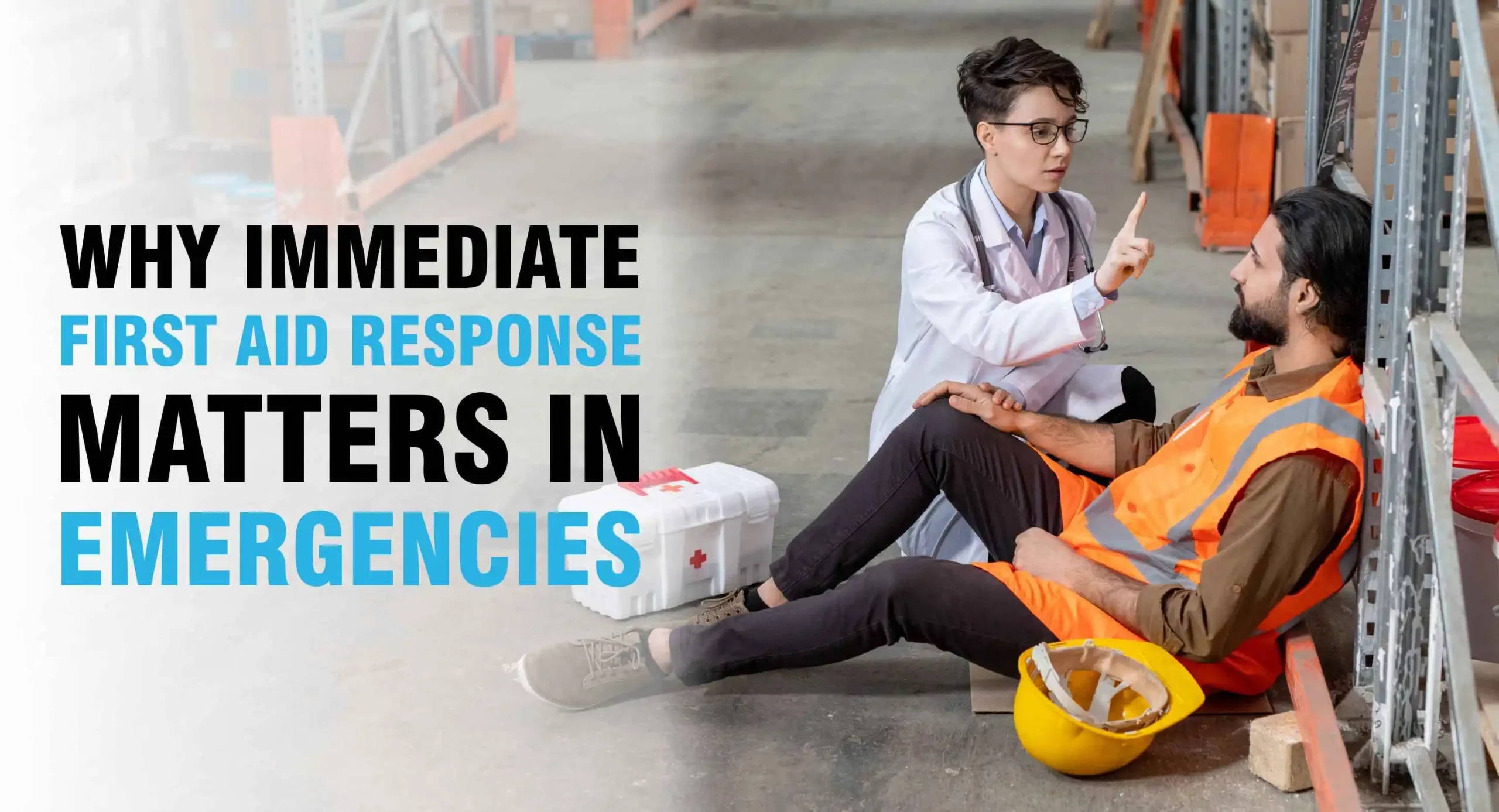Emergencies never announce their arrival. Whether it’s a workplace accident, a road collision, or a sudden cardiac arrest, the moments following an incident are crucial. A quick and immediate first aid response can make the difference between life and death. Understanding why speed matters and how to act efficiently can save lives and reduce the severity of injuries.
Why Every Second Counts?
Imagine you’re at a shopping centre when someone collapses. People gather, unsure what to do. Minutes pass before help arrives—but by then, the damage is done. These first few minutes are known as the “golden minutes,” where an immediate response can preserve life.
During this period:
- Oxygen supply to vital organs may be compromised.
- Bleeding can lead to shock.
- Cardiac arrest victims lose about 10% of survival chance every minute without CPR.
When you act swiftly, you buy precious time until professional medical help arrives.
The Purpose of First Aid
The primary goal of first aid is not to replace professional medical care but to:
- Preserve life.
- Prevent the condition from worsening.
- Promote recovery.
For example, stopping bleeding, performing CPR, or cooling a burn immediately can prevent complications that could otherwise become fatal or long-term.
Common Emergencies and How Immediate Action Helps
1. Cardiac Arrest
A person suffering a sudden cardiac arrest needs immediate chest compressions and defibrillation. Performing CPR right away can double or triple their survival rate.
2. Severe Bleeding
If someone is bleeding heavily from a wound, applying firm pressure with a clean cloth can slow blood loss dramatically. Every second counts in maintaining blood circulation.
3. Burns
Running cool (not cold) water over a burn within the first few minutes prevents further tissue damage. Delaying this can lead to infection and deeper injury.
4. Choking
For a choking individual, quick back blows and abdominal thrusts can clear the airway and prevent suffocation. Delay can lead to irreversible brain damage within minutes.
5. Unconsciousness
If someone becomes unresponsive but is still breathing, placing them in the recovery position keeps their airway clear. It’s a simple action that prevents choking on vomit or saliva.
A Real-Life Example: The Power of Quick Thinking
Take the story of a school teacher who collapsed during class from cardiac arrest. A colleague trained in first aid started CPR immediately, while another called emergency services. By the time paramedics arrived, the patient had regained a pulse. Doctors later confirmed that the immediate response saved his life.
This isn’t an isolated case—thousands of similar stories highlight how trained individuals make a life-saving difference through swift action.
Why Every Workplace Should Prioritize First Aid Training
In the UK, the Health and Safety (First-Aid) Regulations 1981 require employers to provide adequate and appropriate first aid equipment, facilities, and trained personnel. But beyond compliance, there’s a moral duty to ensure everyone can act confidently in an emergency.
Training staff in first aid response means:
- Faster help for injured colleagues.
- Reduced risk of long-term complications.
- Increased safety awareness among employees.
Companies that invest in first aid training often report fewer serious incidents and improved workplace morale.
The Psychological Impact of Immediate First Aid
When bystanders witness an accident, panic often sets in. However, those who know what to do act confidently and calm others. Performing first aid also provides emotional relief—knowing you’ve done something meaningful to help someone in distress.
Conversely, hesitation or fear of doing something wrong can lead to guilt and regret later. Training eliminates that uncertainty.
How to Respond Step-by-Step in an Emergency
Step 1: Assess the Scene
Before rushing in, ensure the area is safe for you and the injured person. Avoid hazards like fire, traffic, or electricity.
Step 2: Check Responsiveness
Gently tap the person and ask loudly if they’re okay. If there’s no response, move quickly to the next step.
Step 3: Call for Help
Dial 999 immediately. Give clear details of your location and the condition of the injured person.
Step 4: Provide First Aid
Depending on the situation:
- For bleeding: apply pressure.
- For burns: cool the area.
- For unconsciousness: perform CPR if needed or place them in the recovery position.
Step 5: Monitor Until Help Arrives
Keep checking their breathing and responsiveness. Offer reassurance and keep them comfortable.
The Role of Technology and First Aid Apps
In modern times, mobile apps and devices have made first aid response more accessible. Apps like the British Red Cross First Aid app guide you through step-by-step instructions in real-time. AED (defibrillator) locations are now mapped on public apps, helping responders find them quickly during cardiac emergencies.
Overcoming Common Fears About Giving First Aid
Many people hesitate to help because they fear legal consequences or making the situation worse. In the UK, the Good Samaritan principle protects individuals who act in good faith to help others. So, even if you make an honest mistake, you’re legally protected as long as your intention was to assist.
Remember, doing something is always better than doing nothing. Your efforts could mean the difference between life and death.
Encouraging a Culture of Preparedness
Schools, offices, and public spaces should foster a culture where first aid awareness is part of everyday safety. Simple initiatives like monthly safety drills or refresher training can keep people confident and ready to act.
Encouraging staff to attend first aid training sessions not only enhances preparedness but also builds stronger community responsibility.
Conclusion
Emergencies can happen anywhere, anytime—but a quick and immediate first aid response transforms fear into action and panic into purpose. By understanding the importance of time, staying calm, and applying the right steps, anyone can become a life-saver.
Whether at home, work, or in public, being prepared ensures you’re not just a bystander—you’re someone who makes a difference when it matters most.
So, take that first step today. Learn first aid. It’s not just a skill—it’s a responsibility that saves lives.

